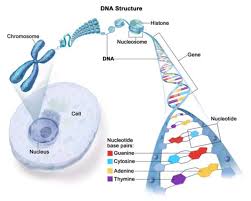The Hindu : Page 07
Syllabus : GS 3 : Science and Technology
Scientists at CSIR-IGIB, New Delhi, developed an enhanced genome-editing system using FnCas9, offering greater precision and efficiency than traditional CRISPR-Cas9.
- This advanced tool improves DNA editing and holds promise for therapeutic applications, including treating genetic disorders like Leber congenital amaurosis, while aiming for affordable, indigenous solutions.

About CRISPR-Cas9 System
- CRISPR-Cas9 is a revolutionary genome-editing tool adapted from a natural bacterial defense mechanism against viruses.
- Bacteria use CRISPR sequences to store segments of viral DNA, which helps them recognize and combat viruses in subsequent infections.
- The most commonly used Cas9 enzyme is derived from Streptococcus pyogenes.
- Mechanism:
o Guide RNA (gRNA): A specifically designed RNA molecule that matches the target DNA sequence.
o Cas9 Enzyme: Acts as molecular scissors that cut DNA at a location specified by the gRNA.
o Proto-spacer Adjacent Motif (PAM): A short DNA sequence adjacent to the target site that Cas9 must recognize and bind to in order to cut the DNA.
o DNA Repair: Once the DNA is cut, the cell’s natural repair mechanisms either repair the break or introduce desired genetic changes.
o Agriculture: Enhancing crop yield and nutritional value.
o Healthcare: Diagnosing and treating genetic disorders.
o Research: Studying gene functions and interactions.
o Challenges with Traditional Cas9: SpCas9 can sometimes cut DNA at unintended sites, leading to potential unintended genetic modifications.
Development of Enhanced Genome-Editing System
- Scientists from the CSIR-Institute of Genomics and Integrative Biology (IGIB), New Delhi, have developed an advanced genome-editing system based on FnCas9, a Cas9 enzyme from Francisella novicida bacteria.
- The new system aims to address the limitations of the CRISPR-Cas9 system, particularly its off-target effects and low efficiency.
About FnCas9 Advantages
- FnCas9, derived from Francisella novicida, offers higher precision but has lower efficiency compared to SpCas9.
- Researchers at CSIR-IGIB engineered enhanced FnCas9 by modifying its amino acids to improve binding affinity with the PAM sequence, resulting in increased editing efficiency and flexibility.
Performance and Applications
- Enhanced FnCas9 demonstrated higher activity and precision in cutting target DNA and identifying single-nucleotide changes compared to unmodified FnCas9.
- In tests on human kidney and eye cells, enhanced FnCas9 showed superior performance with minimal off-target effects.
Therapeutic Potential
- The enhanced FnCas9 was used to correct a genetic mutation causing Leber congenital amaurosis type 2 (LCA2), an inherited blindness. It successfully restored normal levels of the RPE65 protein in retinal cells derived from patient-specific iPSCs.
- The precision of enhanced FnCas9 allows for potential use in therapeutic applications, such as treating genetic disorders.
Future Prospects
- Researchers are working on improving delivery methods and adapting the technology for broader applications.
- The team plans to patent the technology in India, aiming to develop affordable therapeutics for low- and middle-income countries and reduce reliance on foreign licences.
UPSC Prelims PYQ : 2019
Ques : What is Cas9 protein that is often mentioned in news?
(a) A molecular scissors used in targeted gene editing
(b) A biosensor used in the accurate detection of pathogens in patients
(c) A gene that makes plants pest-resistant
(d) A herbicidal substance synthesized in genetically modified crops
Ans: a)










